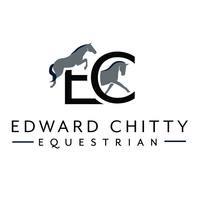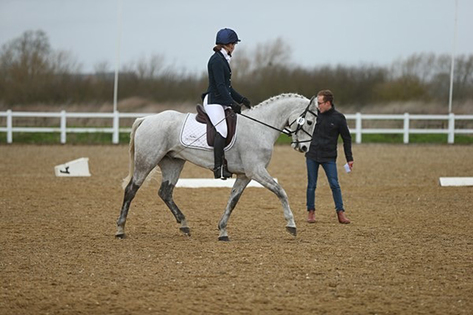
Are You & Your Horse Ready For Bitting Advice? The Steps You Need To Consider First
Equestrian Advice & Guides All Disciplines
Build your business profile for FREE and expose your services to thousands of potential clients!
Create my profile now!
Hi, Edward here,
This time I’m going to give you some tips and tricks to help improve your dressage scores:
1. The centre line:
This happens twice on the test, once at the start and once at the end.
The directives for the judge are; Straightness, contact and balance.
Pick a point at C and focus on it the whole time until you get to G. Before you turn down the centre line, ensure that your horse is moving forwards into a contact equally with each rein, and keep them straight by using your legs. Also, try and avoid rushing, keep the horse balanced throughout. Once you get to G, think of the turn at C as a ¼ of a 10m circle, so you ride it as one, with bend and suppleness as usual. Many people try and ride it as a right angle which causes marks to drop as balance is compromised.
2. Circle:
Circles come in a variety of sizes however they all get ridden the same.
The directives are; Balance, bend, size and shape.
The main things judges are looking for in this section are suppleness and that the horse is following the lines of the curves equally in both directions. Try and ensure you maintain the correct bend throughout while still keeping balance. The size and shape of the circle is one thing people frequently get wrong. Make sure it’s round - if you’re doing a 20m circle at A, you don’t need to go deep into the corners. The image below shows the circle ¼ points you should hit.

3. Medium paces:
The directives for this one are; Regularity, lengthening of steps, swing through back (trot) and balance.
Tips for at home:
In the test:
4. Free walk on a long rein:
This movement is worth double marks in a dressage test, so it’s an important one to perfect.
The directives are: Regularity, purpose, relaxation, stretching forwards and down, ground cover and suppleness of the whole body.
Really ensure you lengthen your reins gradually and you can still feel the bit at the end of the rein, the horse should be stretching forwards into the contact. Ensure you have enough purpose and ground cover – remind yourself you aren’t on a hack, you’re in a competition.
When in transition back to medium walk, ensure that it’s fluid and that you still have the contact. Most horses prefer a slower retake/shortening.
5. The Halt:
This movement is always at the end of the dressage test, so never give up until it’s done.
The directives are: Balance and acceptance of the halt.
The quality of the walk or trot before you halt is most important. Your horse needs to be active, so when you collect and prepare for halt they do not drop off behind the leg. You need to keep the impulsion and the hind leg working underneath your horse, as this then helps their hind quarters to be square and not trailing behind. Remember, as with any downward transition, it’s a forward movement and you need to ride forward into the halt.
Your balance and position as a rider will contribute towards a good halt. The aid for halt would be to step into the heel, sit really nice and tall and deep in the saddle and let everything go down through your stirrups, remembering to look up and ahead, not down.
Once halted in a test, try and ensure the horse is immobile for a while, and avoid adjusting too much. In many of the tests I’ve judged people have tried to adjust and it’s gone the opposite way.
I hope this has helped you and let me know how you get on in your next test, by tagging @horsemart and @equinetuition in your post.
Until next time,
Edward
Instagram: https://www.instagram.com/equinetuition/?hl=en
Facebook: https://www.facebook.com/equinetuition/
Website: www.edwardchitty.com

